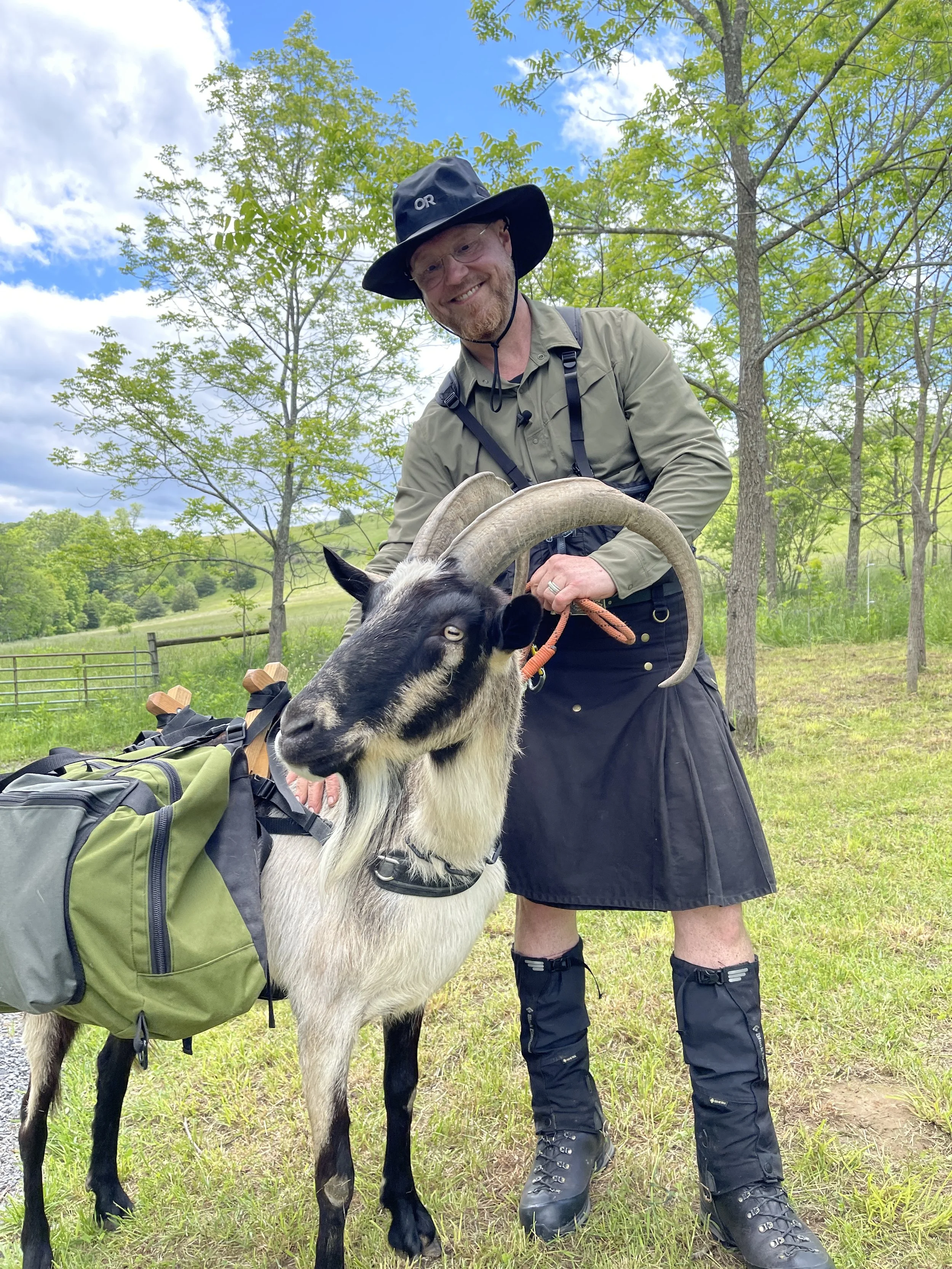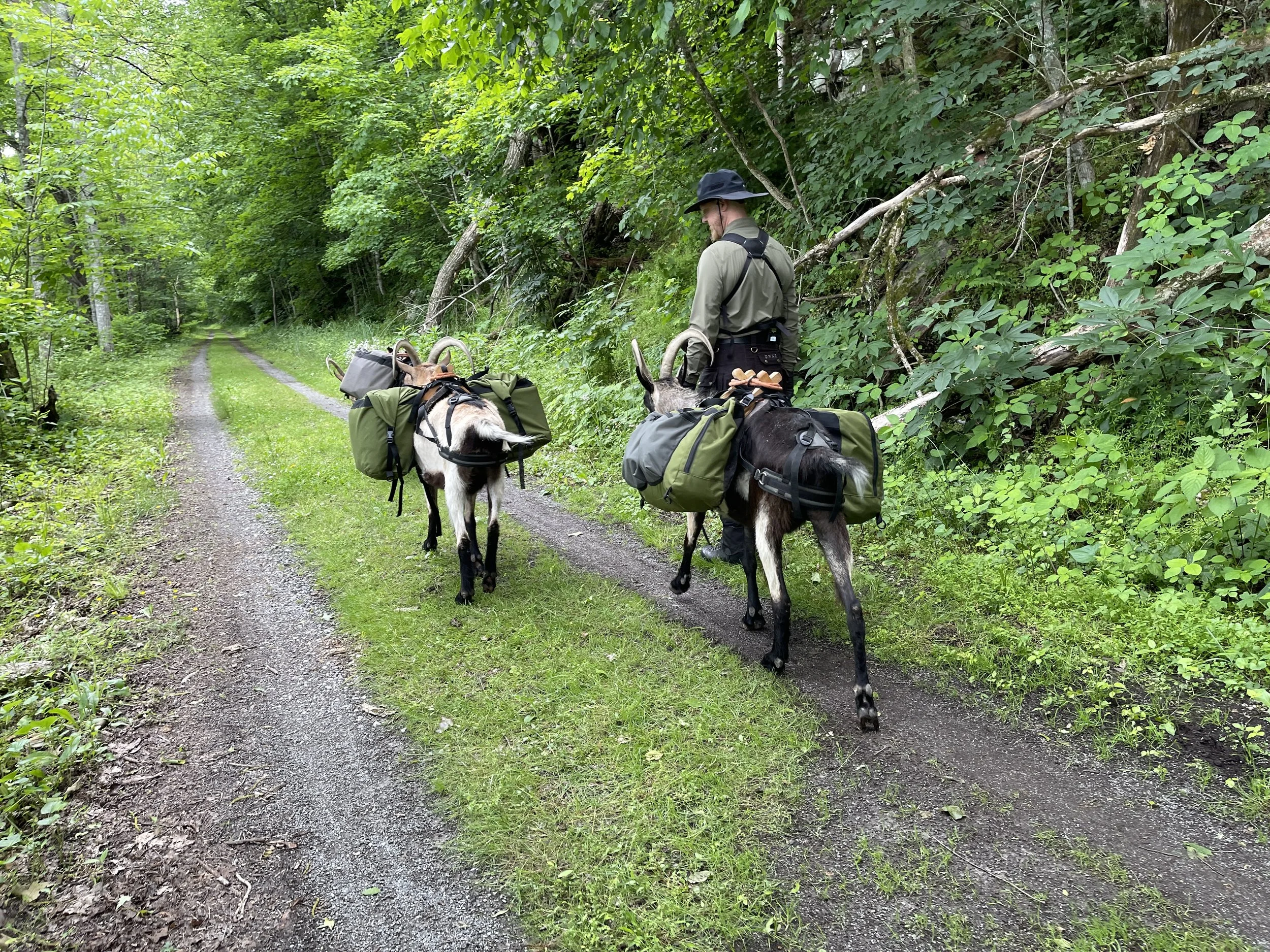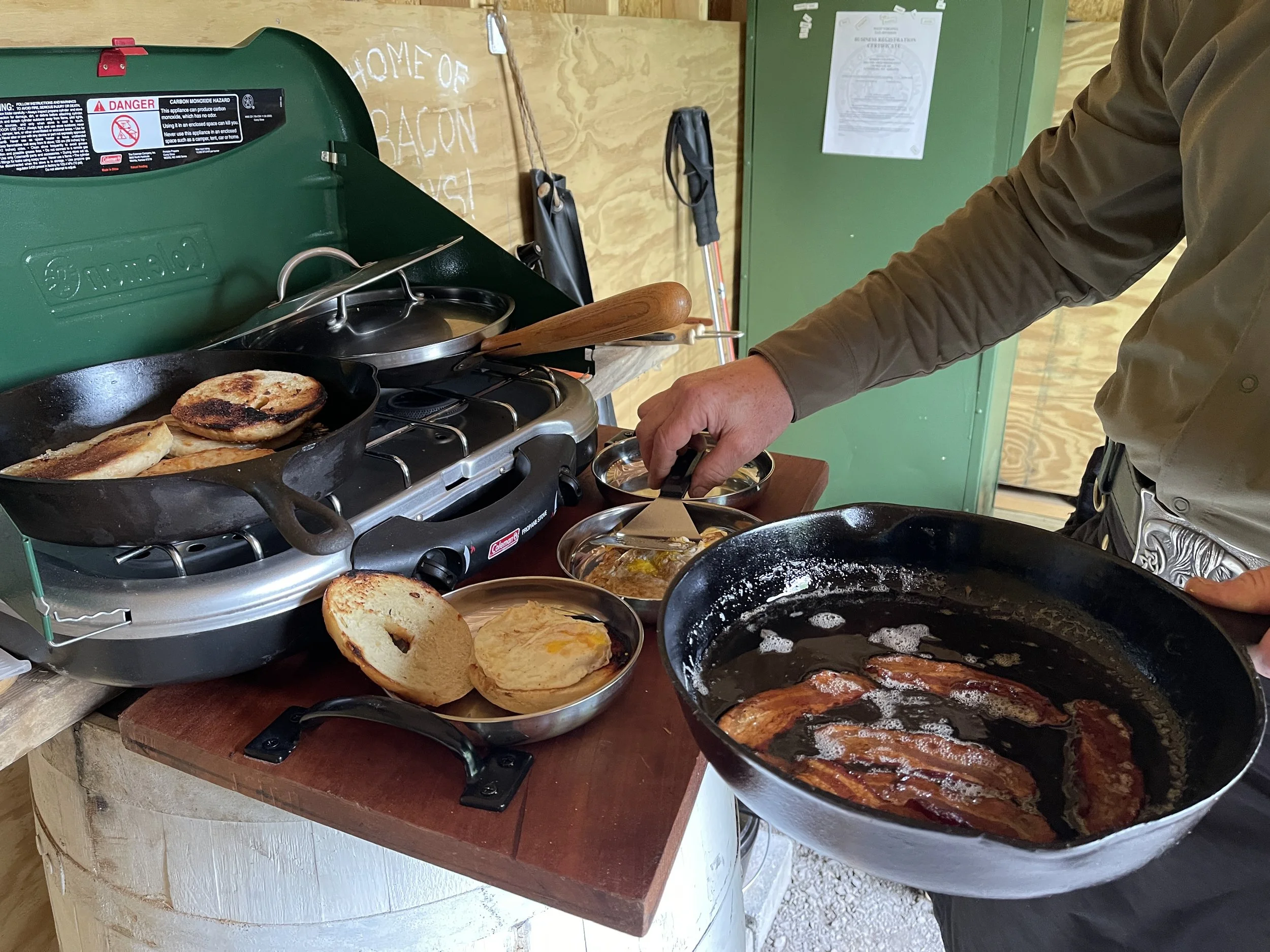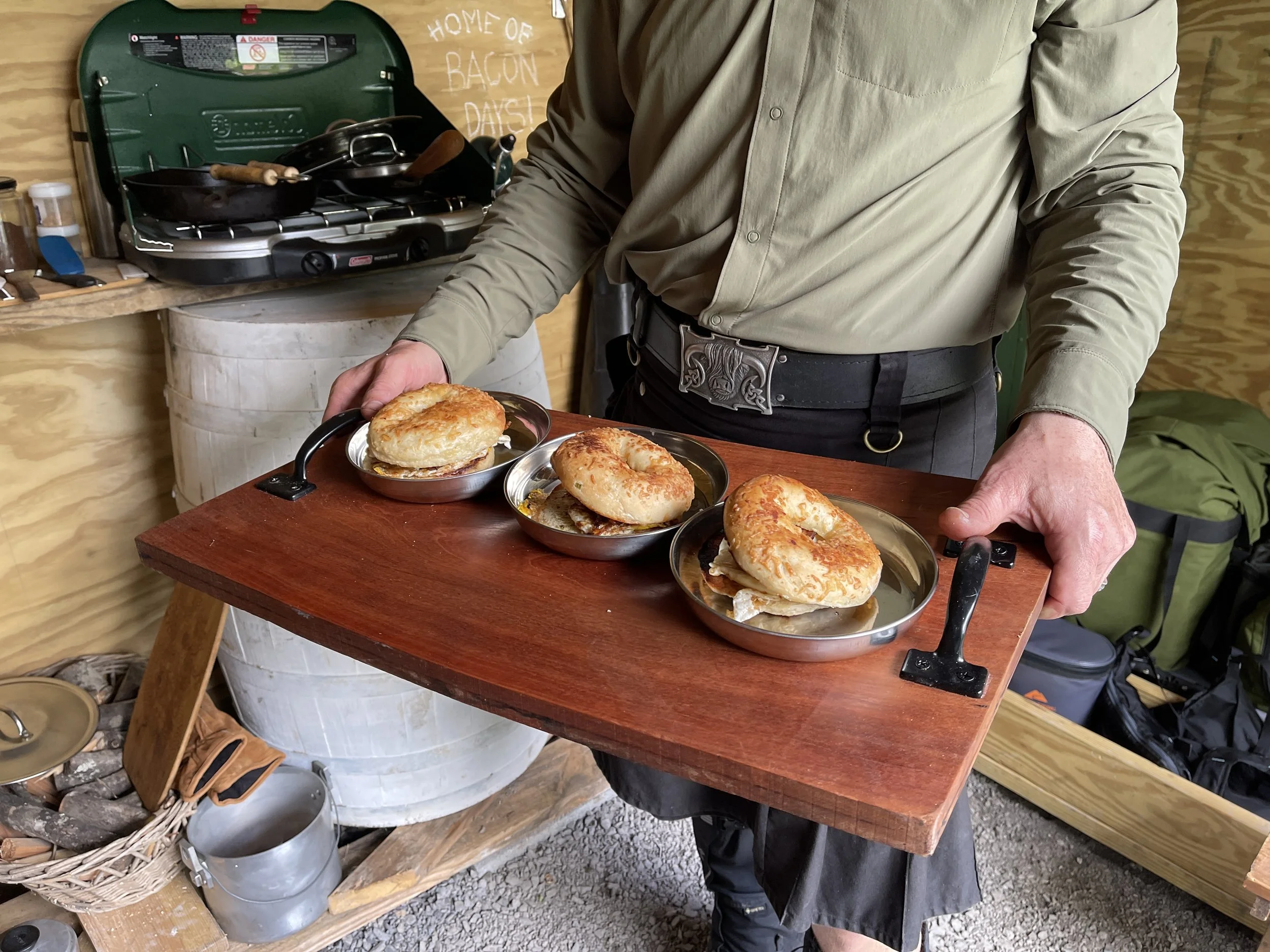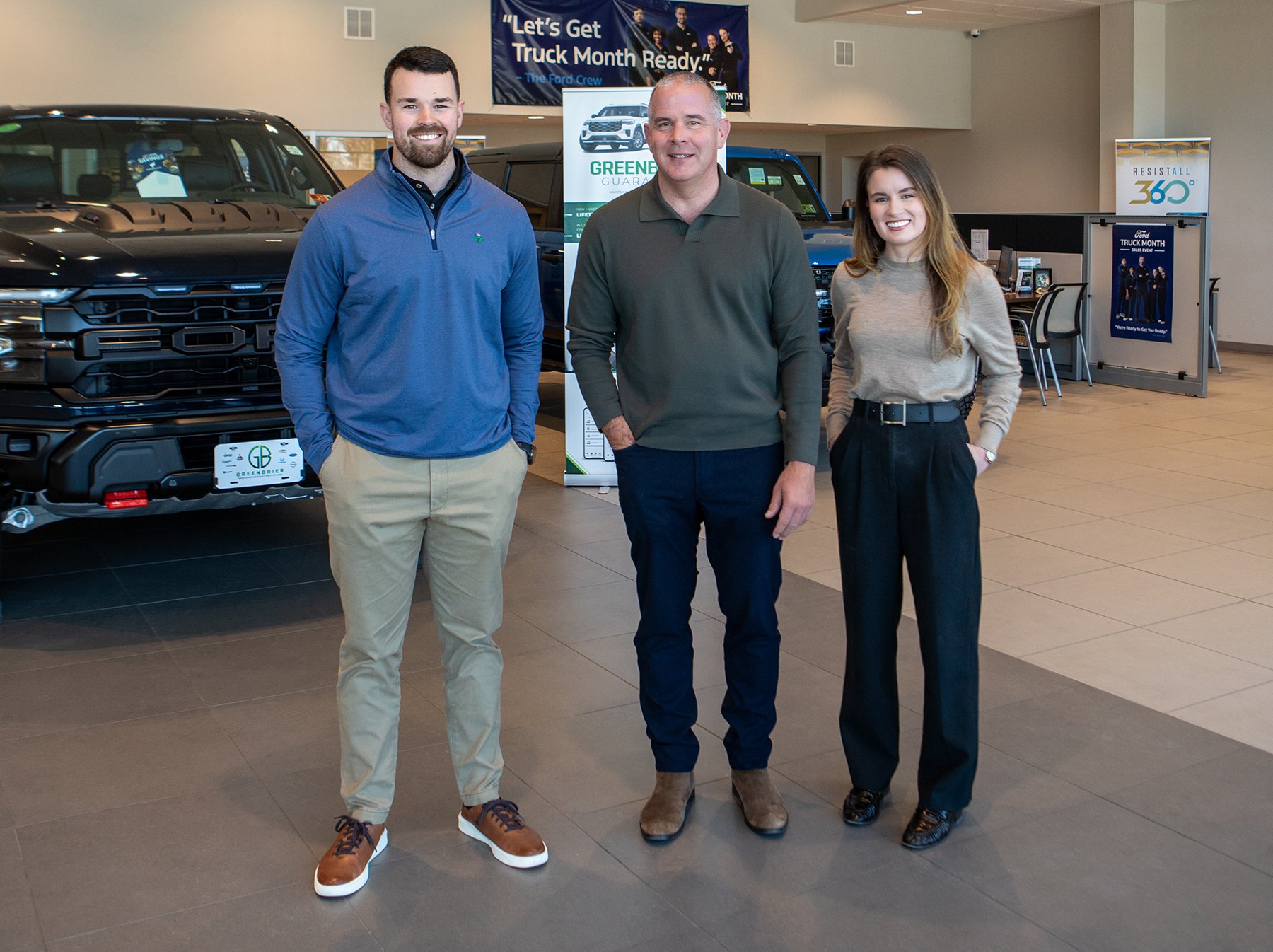Goats on The Greenbrier
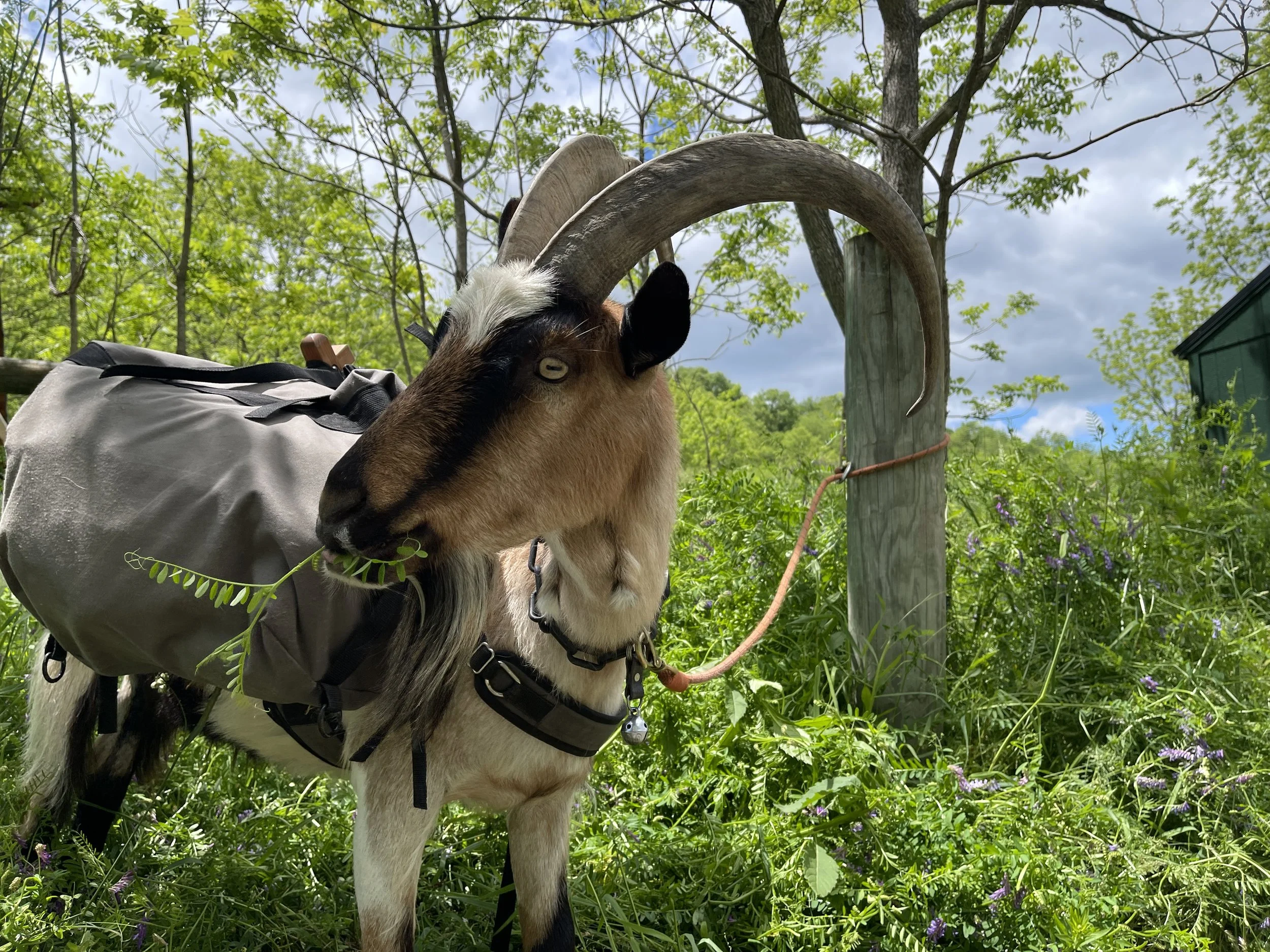
By Stephen Kowalkowski | Photos Courtesy of The Greenbrier Goat
Before the pandemic every third year Aaron Coleman and his friends from art school reunited to backpack in the Cranberry Wilderness of West Virginia. With each trip their packs became progressively heavier with gear to survive the elements, until finally one of the friends quipped that he could really use a pack animal to help with all this added weight. In that offhand comment an idea was born.
Coleman, who had an outdoorsy childhood outside of Charlottesville, Virginia, first encountered a pack animal at Philmont, the Boy Scout high-adventure camp in New Mexico. There, mules helped carry his troop’s gear, but when researching the various kinds of pack animals in the wake of his friend’s comment, Coleman locked in on goats, for which he found plenty of useful information online.
Aaron Coleman
Through his online research, Coleman connected with a kind of long-distance mentor, Marc Warnke of packgoats.com. Warnke’s website offers courses and informational guides as well as links to his blog and podcast, all focused on the beauty and practicality of using goats to haul everything from elk meat on high-elevation hunts to camping gear for exploratory backpacking.
Unable to make the trip out west to see Warnke’s operation, Coleman absorbed as much as he could from home, making use of support from the West Virginia Small Business Development Center (WVSBDC) and West Virginia Recreational Economies Initiative (WV REI) to access online training.
Conveniently, goat keeping runs in the family. Coleman’s mother-in-law, Lynn Benedict, owns Walnut Fork Alpines, a dairy-goat farm in Lewisburg. Able to draw on Benedict’s decades of experience raising breed standard national champion American Alpine goats, Coleman was able to quickly bond with three baby male goats, bottle feeding them to increase their bond and spending lots of time in their presence to accustom them to human companionship. The Alpine breed is strong and intelligent, and their daily training and interaction helped prepare them to serve as pack goats and the heavier social burden of hiking with strangers.
At first Coleman was merely happy to have companion animals to accompany him on his walks around the family farm. But as the goats matured, Coleman felt eager to share the joy of their companionship with other hikers. While the West Virginia landscape wouldn’t support the kind of high-elevation hunts Marc Warnke offers in Idaho, Coleman looked to the Greenbrier River Trail as an available community resource, an accessible place where both locals and travelers can experience the natural beauty and serenity of rural West Virginia.
The trail’s origin as a railway line provides a flat walking surface, accommodating hikers that wouldn’t be able to navigate steep switchbacks and uneven terrain. In bringing his goats to the River Trail and establishing his business, The Greenbrier Goat, Coleman sought to build on this existing strength. Recalling how his backpacking friends groaned under the weight of their gear, Coleman believed that providing pack goats to hikers would free up visitors’ energy to take in their surroundings and memorably enhance their camping experience with some unique pack goat companionship.
Coleman erected a trail shelter at mile marker 22.5 (one mile above Spring Creek Station). It features a couple wooden sleeping platforms, fire pit, and cooking area. The names of Coleman’s three goats—Ragnar, Athelstan, and Floki—come from Norse mythology, and the camp area is in keeping with this theme. There are wide Viking chairs adorned with runes for strength and safe travels. A lifting stone allows campers to test their strength alongside lifting logs that help guests gain a feeling for the weight comparable to the loads the pack goats carry on their journeys. Next to the shelter sits a handicap-accessible restroom designed to look like a Viking ship.
This camp aesthetic—as well as the marketing of the Greenbrier Goat—allow Coleman a new way to flex his creative muscles. Before moving to Greenbrier County with his wife, Emily, to live on the family farm, Coleman attended art school in Richmond, Virginia at Virginia Commonwealth University and built an active art career. Among his many commercial art projects, Coleman designed tickets for the Dave Matthews Fan Club and drew murals for Whole Food Market in Charlottesville, where he came to value the ethos of responsibly sourced foods.
At his trail shelter Coleman serves a gourmet trailside ‘Cowboy Breakfast’ of all local foods: Swift Level Fine Meats bacon with a peppered farm-fresh egg over easy on a blackened jalapeño bagel from the farmers market with black Cowboy coffee and sparkling apple cider. His guests on longer expeditions are offered steak dinners after a day’s trek. Visitors of all kinds can stop in on the first Saturday in October for ‘Bacon Days’ to meet the pack goats and have a complimentary slice of bacon.
For guests that book a trip with the Greenbrier Goat (see thegreenbriergoat.com and hipcamp.com), Coleman serves as trail guide, sharing stories and history. With the help of Coleman and his pack goats, adventurers can explore the River Trail and choose among various guided pack goat treks. On the trail Coleman walks with his lead goat secured to a belt clip.
Having traded in his heavy backpack for a lightweight chest harness, Coleman has easy access to essentials such as bear spray and a first aid kit while the goats haul the food and heavy camp gear.
The goats wear sawbuck saddles by Bantam Saddle Tack that suspend the weight above the goat’s spine, and Coleman tinkered with the adjustable straps until each piece comfortably fit the goats. Coleman uses traditional commands from mule driving to direct his animals: Gee! Haw! Hip! Forward, goat!
In their natural settings goats are prey animals, and their horizontal pupils are perfect for scanning for predators on the horizon. Their long horns help regulate their body temperature. And two of Coleman’s three goats sport wattles—fleshy, hair-covered appendages that hang from their throats. Most male goats lead unenviable lives. Some are kept for breeding, but even these lucky few spend most of their days in confinement. The rest are destined for slaughter. Ragnar, Athelstan, and Floki escaped those destinies for happy grazing and outdoor roaming. Relatably, “they just like to eat and do a good job,” Coleman says.
The goats are now six years old, and The Greenbrier Goat is in its second year of operation. Aside from making memories with his guests, Coleman aims to increase his pack-goat knowledge with more online training. He is preparing to one day trek the Greenbrier River Trail in its entirety with his three pack goats, who comfortably move at a pace of 7-8 miles a day.
Recovering each evening from the day’s trek, the goats graze less on grass and more on woody stemmed plants and leaves. Coleman likes to sit and watch them feed. Coleman’s mentor, Warnke, calls these slow, peaceful scenes “Goat TV,” and The Greenbrier Goat is happy to share it with viewers of all kinds.
